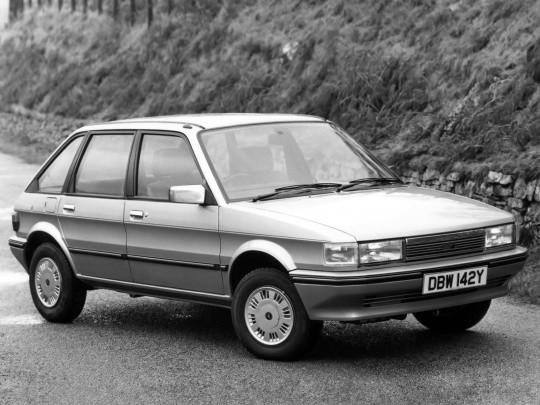Miracle Maestro, British Leyland commented on the introduction to 1983. But as a successor to the infamous Austin Allegro, he did not bring his pedigree.
The Allegro ...
This large glazed Austin had the thankless task of making "the worst car in the world" forgotten. Despite all optimism and feigned objectivity; the Allegro turned out to have been a real barrel. Even after endless discussions about it. That was of course no more than logical: no one within the bastion of apathy that was British Leyland at the time, also wanted it to be a success. That ambition was missing. People found work to be very annoying and time-consuming at all.
The eighties
The Maestro was born under such a star. Another wonder that this BL offspring looked relatively fresh. In fact, yes, the design dates back to the decade before. From 1977, to be precise. It was called smooth lines, because we were already in the eighties. Then we found a lot of plastic, color, hair and buttons very beautiful. The Maestro had a lot of glass. And few curves. The interior was no different, everything was straight and angular. The wheel was round again, thank goodness they were shocked in Birmingham itself by the square variant that the Allegro from the first series was given. In the MG version of this Maestro even a digital dashboard shone, including a talking on-board computer. This eighties miracle had a vocabulary of no less than thirty words. Coincidentally about as much as of a considerable part of the working population that was on the payroll, but especially at the factory gate. To strike. No idea for what, but this was the corporate culture.
Best potential
The quality inspectors were also refusing to work under those banners and that was a pity. The Maestro actually had the best potential. This middle class was not that bad. The transmission was from Volkswagen, or from Honda in the two-liter versions. The driving characteristics were just fine and it was spacious. However, the lighter was placed in such a way that you had to get out of the back to use it. That was a pity. But otherwise the Maestro was fully equipped, although you had to pay extra for a right-hand mirror. The clock was then standard again. And digitally. Such a weird blind hole in your clock shop as shamelessly adorned in the absence of a timepiece in a budget Kadett, you were at least saved by the courteous British. They weren't that blunt.
Badge engineering
But a little bit lazy. Because people assumed that the brand name would sell itself, they released the sporty version as a real MG. The MG Maestro, almost a contradiction in terms. And in the first version it was like this: this bad-engined Austin Maestro had the cowardly R-series 1.6 liter four-cylinder under the hood. A lifeless lump of iron and oil with (hot) starting problems, a weak head gasket, ditto crankshaft and a freezing carburetor in winter conditions. Furthermore, it drove well. But not fast or sporty. That was much better with an upgrade of the macho-Maestro; in 1984 the 2.0 EFi four-cylinder was bolted in the front. Now the fast Maestro suddenly had balls: the Lucas multipoint injection and an engine capacity of two liters resulted in a capacity of 115 hp. That was a lot. Really. An acceleration time of 8.5 seconds to touch 100 km / h was impressive for what was basically a good family car. The even faster Maestro Turbo, introduced in 1988, added a big boost. The 100 was reached in seven seconds, its top speed was 206 km / h. Today not even worth mentioning, but now we also find Derrick slow.
Extinct. Except in China
But he didn't drive a Maestro. And nowadays nobody anymore, they are almost extinct. In 1995 the last of the band, who was now owned by the Rover Group, was running. Of the more than 600.000 copies, there are probably only a handful left. In China a bit more: up to 2007, variations of the Maestro were built there, as easy to remember Etsong Lubao QE6400 Ruby and the order variant QE6440 Laird. Equipped with reliable Toyota technology, diligently assembled and without image problem. In short, a great success. That also went great. So it was possible. Here we only have the brochures, and it was already there: Driving is believing.













Have made a test drive in a Maestro 1.6 HLS. We had a Honda Civic third generation, but due to family expansion, the Civicje became too small.
The Maestro drove well and was stylish English luxury.
The disadvantage of the test drive was that the seller definitely wanted to come along, and after I mentioned that the newest Rovers were actually Japanese Hondas at the time, it didn't work out between the Maestro and me ...